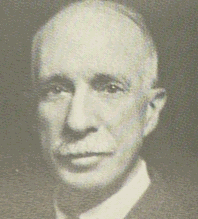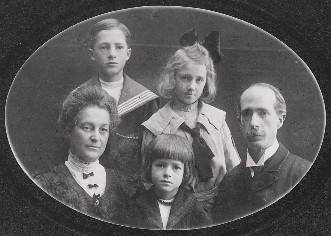|
Main Page
Children's Page |
|
1927 Doll Exchange
Historical Background Dr. Sidney L. Gulick Eiichi Shibusawa Mission of Friendship Preparations in US Receipt of Dolls in Japan Preparations in Japan Receipt of Dolls in US |
1927 Doll
Exchange
Dr. Sidney L. Gulick

|
|
|
|
Dr. Sidney L. Gulick |
Dr. Sidney Lewis Gulick originated the idea and developed the plan to have American children send dolls to Japanese children. He deeply believed that this gesture of giving dolls would foster international friendship and peace.
Knowing how much dolls are treasured in Japan, Dr. Gulick believed they would be the perfect messengers of peace. He also believed that if Japanese and American children could learn to understand one another when they were young, they would remain friends long into the future.
Dr. Gulick was born in 1860 in the Marshall Islands, and died in 1945 in Boise, Idaho. He studied science, intending to be a science teacher, but he ultimately graduated from Columbia Theological Seminary. In 1888, he traveled to Japan, where he stayed for 25 years working as a missionary. He wanted to be the best missionary possible, so he mastered the Japanese language. He not only gave sermons in Japanese, but he also wrote books in Japanese.

|
|
|
Dr. Gulick (far right) Note: At the time of this photo, Dr. Gulick's two other sons were in the U.S. for schooling. |
|
He taught English, science, and religion at several schools and universities in Japan. In his last seven years in Japan, he served as Professor of Theology at Doshisha University in Kyoto and as lecturer at the Imperial University of Kyoto. During his many years in Japan, he developed a keen understanding of Japanese culture and way of life.
His grandson Sidney Gulick, 3d, describes his grandfather's return from Japan: "Poor health forced him to return to America in 1913, but his affection for Japan was so strong that he continued to write and lecture about the country for many years after he had left. He hoped that by doing so he might help to minimize the tensions that were building between the two countries and bring about a relaxation of the United States' very hurtful immigration laws. He later wrote that in America, 'I am as truly a missionary working for Japan as if I were in Japan.'"
In 1926, Dr. Gulick was instrumental in the formation of the Committee on World Friendship Among Children, sponsored by the Commission on International Justice and Goodwill of the Federal Council of the Churches of Christ in America. The first project undertaken by the Committee was to organize the sending of American dolls to the doll festival in Japan, the O Hina Matsuri. The Committee has specific objectives for the project, such as " to implant in the minds of children the ideals of goodwill, understanding, and peace among nations."
The Committee promptly set up a special department to coordinate the preparations for American children to send Friendship Dolls to Japanese children.
During World War II, many Americans regarded Dr. Gulick as a sympathizer with the enemy because of his previous advocacy of friendship and peace with Japan. Some even accused him of being a Japanese spy.
The American Blue-eyed Dolls sent in 1927 continue to fulfill Dr. Gulick's original vision of teaching children the importance of international understanding and peace. Almost 300 of these dolls can be found in elementary schools and kindergartens throughout Japan.
Sandra C. Taylor, Professor of History at the University of Utah, wrote a biography about Dr. Gulick in 1984. The title is Advocate of Understanding: Sidney Gulick and the Search for Peace with Japan, and the publisher is The Kent State University Press. Although no longer in print, you should be able to obtain a used copy by searching the Internet booksellers.
Obituary
of Dr. Sidney Gulick, published in The New York Times
on December 24, 1945